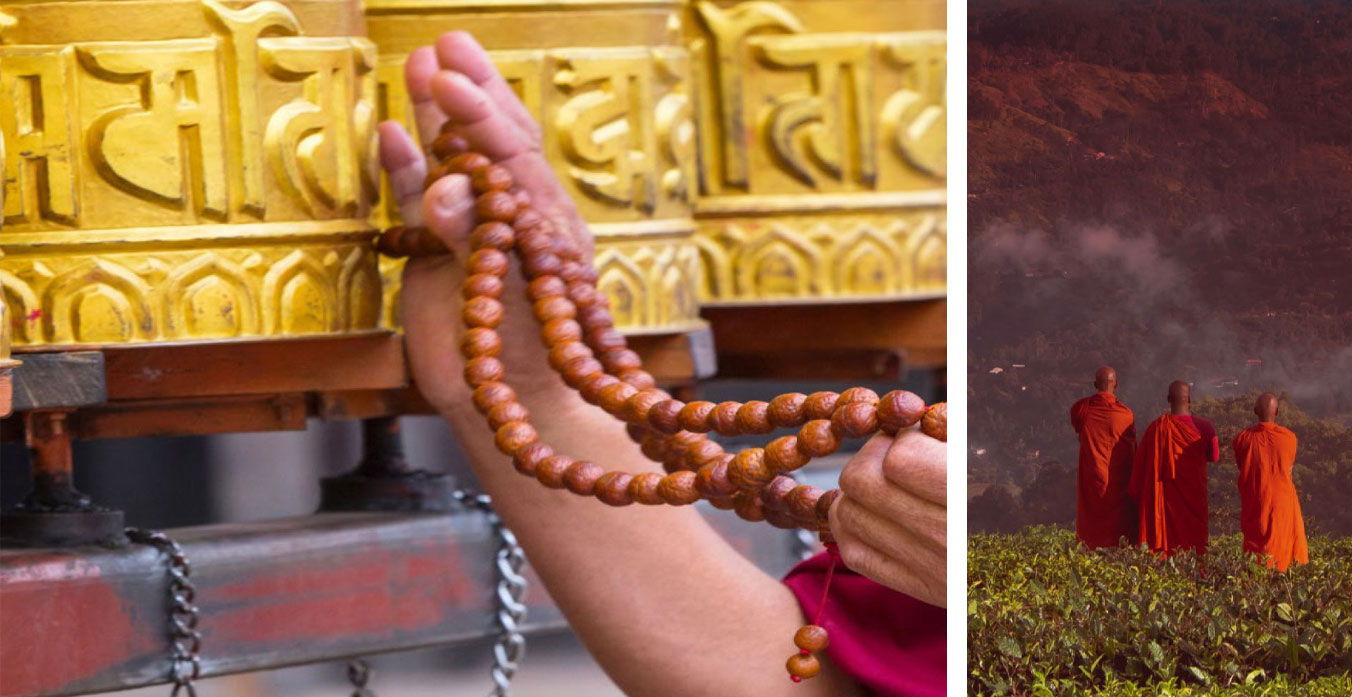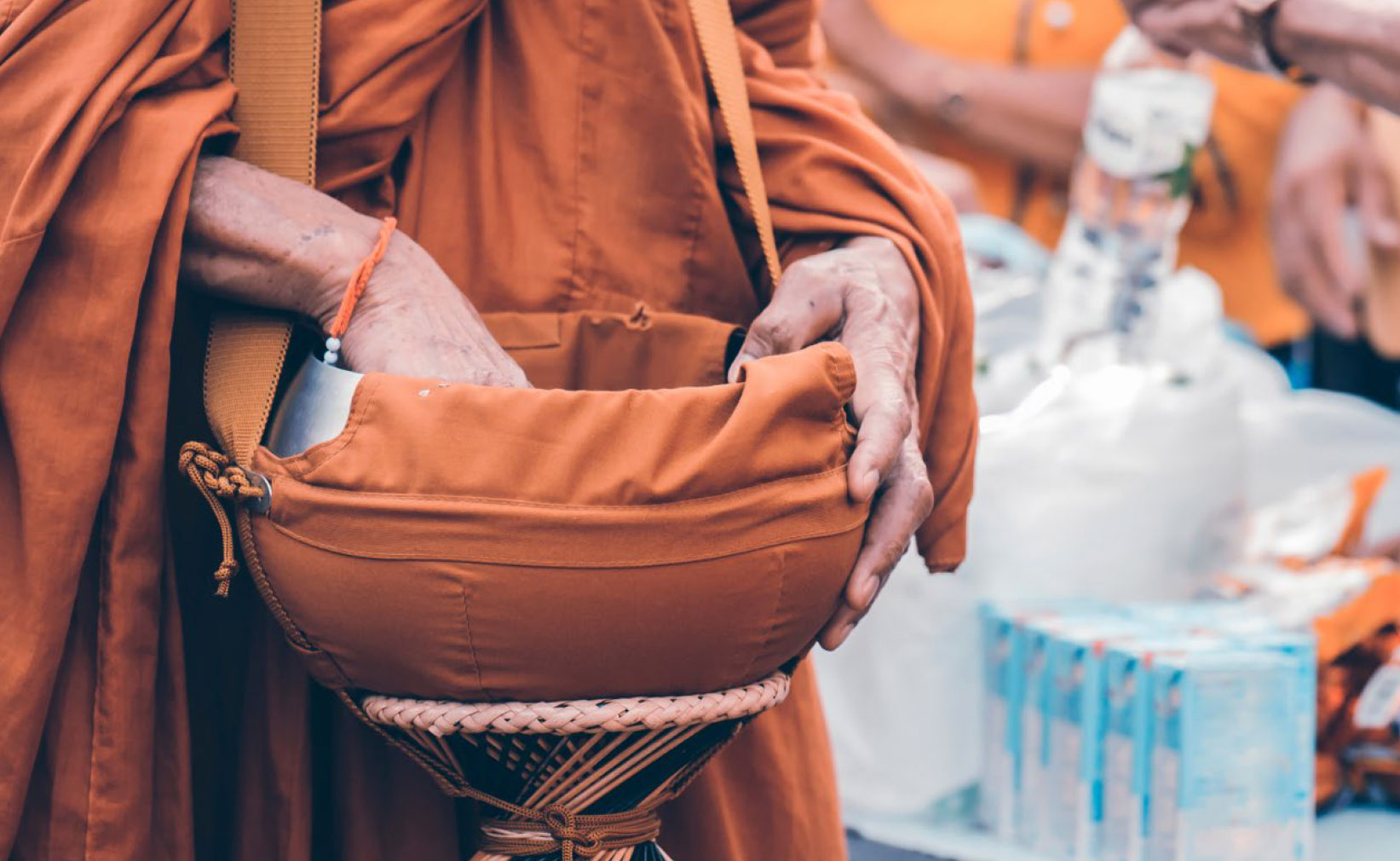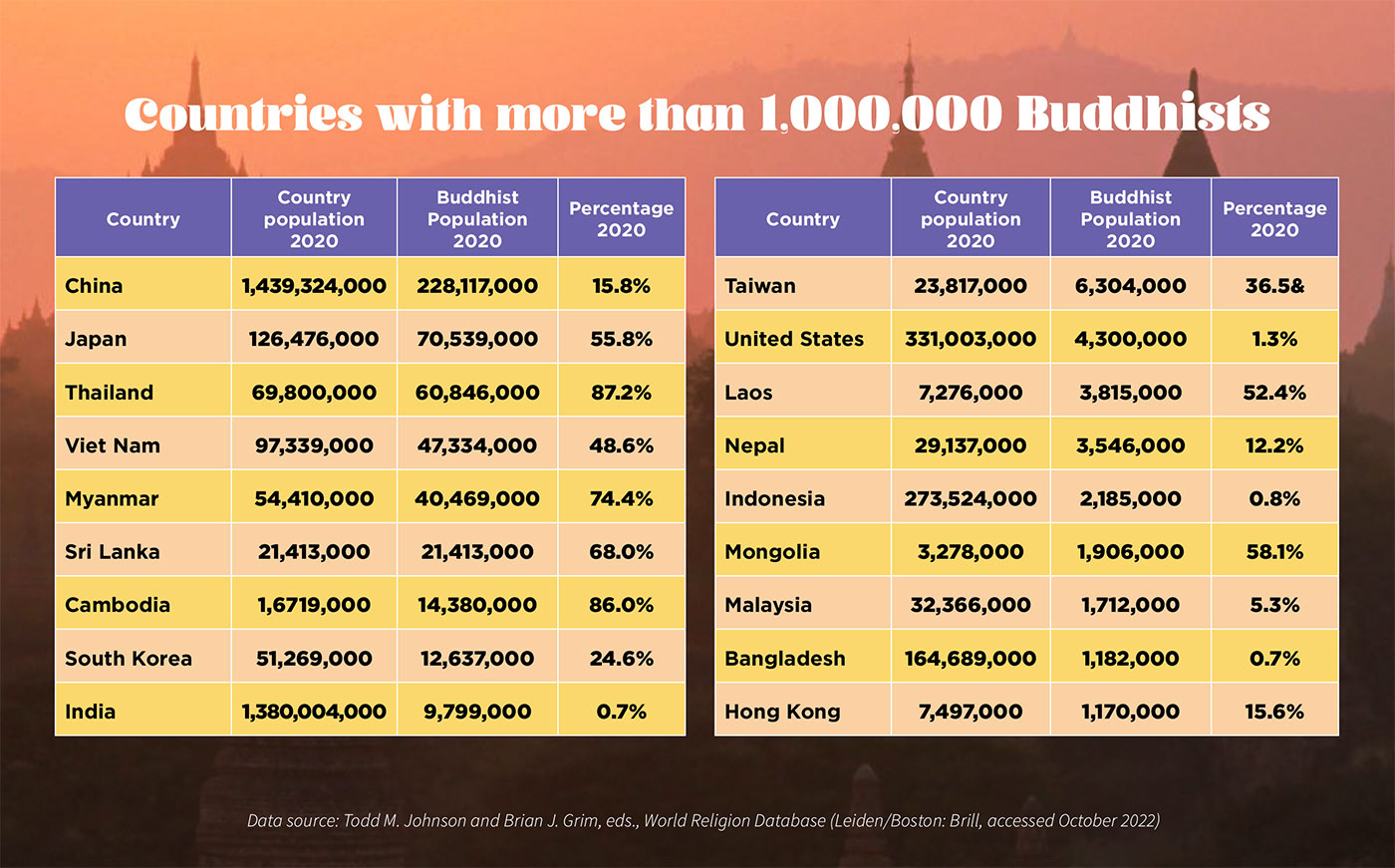「燃え尽きないでください。自分自身を燃料にして燃え続けてください。主人の召使いたちよ、元気よく期待して、注意深くありなさい。困難なときでもやめないでください。ますます熱心に祈ってください。」ローマ人への手紙 12:11-12 MSG 訳
This first century admonition from the Apostle Paul could just as easily have been written today. With the lingering chaos from the pandemic, war in Ukraine, the new war in the Middle East, persecution of Jesus followers in much of the world, and economic recession, it is easy to just throw up our hands and ask, “what can one person do?”
Paul gives us the answer. Stay focused on the Word of God, expectant that He will respond, and “pray all the harder.”
With this guide we invite you to pray specifically that God will become known to the one billion people across the globe who are at least nominally Buddhist. Each day, beginning January 21, 2024, you will learn something about Buddhist practice and influence in a different place.
This prayer guide is being translated into 30 languages and distributed through over 5,000 prayer networks worldwide. You will be participating with more than 100 million Jesus followers in intercession for our Buddhist neighbors.
Many of the daily profiles focus on a specific city. This is intentional. The cities that are described are the same cities that prayer teams from the underground church are ministering in on the very days that you are praying! Your intercession over their work on the front lines is critically important.
皆さんもぜひ私たちと一緒に参加し、「明るく期待」し、「より一層熱心に祈って」ください。
イエスは主です!

Prince Gautama was born in the southern part of modern-day Nepal in the sixth century BC. A local shaman noticed marks on the child’s body and foretold that he would grow up to be a world ruler and enlightened one. His father, desiring Gautama to be a great ruler, sought to protect him by providing a life of luxury.
At age 29, however, Gautama was exposed to the suffering outside the palace where he lived. As a result he spent six years as a wandering ascetic in search of a solution to the problem of suffering. In vain he tried various meditation techniques, hoping for insight. Finally, he resolved to sit beneath a bodhi tree until he had attained the enlightenment he sought. Though tempted by Mara (the Evil One), he persisted and eventually achieved what he believed to be a realization of supreme truth. From that point on he was considered to be the “Buddha”, which means an “Awakened One” or “Enlightened One”.
The Buddha found his original companions in the search for enlightenment and preached his first sermon to them. Unlike most religions there was no supreme deity involved. Instead he outlined the “Four Noble Truths”:
“Suffering” according to the Buddha arises due to our clinging to and craving for impermanent things that keeps us all caught in an ongoing process of death and rebirth where everything, even one’s very self, is impermanent and an illusion. The only way to get off that endless cycle of rebirths is to walk the “The Middle Path”, avoiding extremes and living with right understanding, thought, speech, conduct, livelihood, effort, mindfulness, and finally right concentration. The end-goal is not eternal communion with God, but rather—like the flame of a candle being extinguished—a state where craving is ended.
People see Buddhism as their own folk religion, even though it does not relate to a high deity. As such, it’s like a blanket that falls on existing cultures and conforms to the landscapes underneath. In Tibet, the Bon religion of shamanism was overlaid with Buddhist monasteries for meditation. In Buddhist Thailand, lay people offer monks cigarettes in their alms bowls; in Buddhist Bhutan, however, smoking is a sin. The Thai Buddhist council strictly disallows women’s ordination and forbids women from entering holy places inside temple grounds, yet Nepal and England ordain female monks. Cambodian Buddhists have no discussion in the temple concerning care for the environment, while Western Buddhists incorporate environmental activism into their practice of the dharma.
* For clarity, this guide follows the Sanskrit spelling of Buddhist terms, rather than the Pali spelling. Dharma is the Sanskrit spelling; the Pali spelling would be dhamma.

Theravada Buddhism
emerged from Sri Lanka, where the Buddha’s sermons and teachings were first canonized. It focuses on the attainment of enlightenment through personal meditation and good deeds. Myanmar, Thailand, Cambodia, and Laos follow this tradition.
Mahayana Buddhism
emerged based on texts attributed to Buddha, which taught that a bodhisattva, or enlightened being, could choose to delay entering nirvana (the ultimate spiritual goal of liberation) to deliver other sentient beings from their karmic suffering (based on a person’s past actions). This stream of Buddhism was traditionally practiced in China, Japan, Vietnam and the Korean peninsula.
Tibetan Buddhism
arose in India in AD sixth century, with a focus on accelerating enlightenment through ritual practices and visualizing heavenly bodhisattvas.
In recent years Westerners have adopted various forms of Buddhism that focus primarily on a quest for inner peace. Some have joined Theravada monasteries, seeking spiritual purification through meditation and by following the five basic rules of conduct. Others have committed themselves to a Tibetan lama (monk), study the Tibetan texts and learn chanting. Still others follow a Westernized form that mixes Asian traditions with Western notions of Buddhism. They often continue in their previous occupations and wear everyday clothes, but spend time in meditation and attend retreats.
In recent years Westerners have adopted various forms of Buddhism that focus primarily on a quest for inner peace. Some have joined Theravada monasteries, seeking spiritual purification through meditation and by following the five basic rules of conduct. Others have committed themselves to a Tibetan lama (monk), study the Tibetan texts and learn chanting. Still others follow a Westernized form that mixes Asian traditions with Western notions of Buddhism. They often continue in their previous occupations and wear everyday clothes, but spend time in meditation and attend retreats.


N/A

